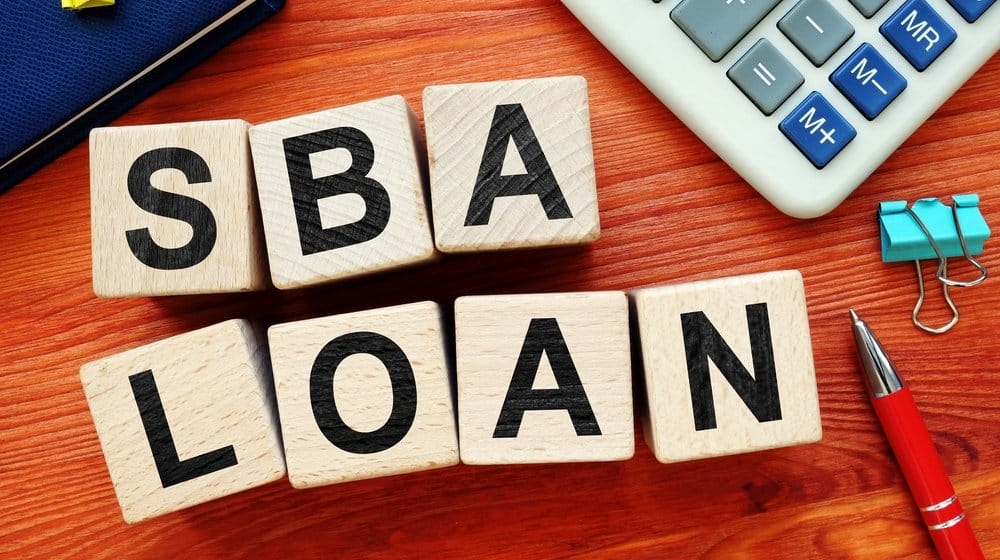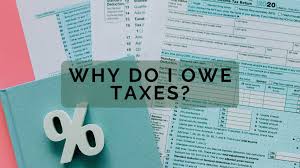Funding your business through the SBA loans can get easy when you know the basic facts about them as discussed in this post. This will include getting in-depth knowledge of the meaning of SBA loans, types, eligibility criteria, lists, application guides, and tips that should put things in place.
SBA LOAN MEANING
SBA is an acronym that stands for small business administration. It was formed on July 30 1953 by President Eisenhower when he signed the small business act. This was originally enacted as the small business act of 1953 in title ii. It is an agency set up by the UNITED STATES to aid small businesses, corporations, establishment, and entrepreneurs. SBA loans were made possible through banks, credit unions are other partnered lenders of the agency. Activities of the SBA can be summarized into capital, contracts, and counseling.
CAPITAL
The capital provision of the agency funds through the states allocating annual budgets. Meaning the agency allocates $990 million (2015) Although President Obama promised an increment in the next 5 years, there has been no record to that effect.
In addition, loans were assured to provide a 90% assurance to ensure strong capital for small businesses. The agency had proven itself by having a record lending volume in late 2010.
The agency opens its doors to failed firms and cultural innovations across the country with 5% off the annual budget. In view of aligning entrepreneurs to the lines of capital and credit to grow their businesses, the SBA franchise Directory was formed in March 2018
Read Also: List Of Federal Government Agriculture Grants
CONTRACTS
Awarding contracts is one of the genuine elements of this agency. The SBA says 0.23 per cent of federal government contracts to small businesses are efforts of the SBA. Small business contracting programs were set-up ensuring not to neglect women-owned, veteran-owned ,and service-disabled in the federal contrast. Some of the programs provided for businesses include the Business Development Program and HUB Zone.
COUNSELLING
The SBA provides counseling to businesses by the form of setting up at least one of its offices in each of the US states.
Also, it created grants to support counseling partners, which included over 900 small business development centers (most likely located in universities and colleges). Some of these counseling services include
- A volunteer mentor corps of retired and experienced business leaders with approximately 350 chapters
- A SCORE, 110 women’s business centers.
This service has been a tremendous success in history that it records over 1 million services to small business owners yearly. It is little wonder that President Obama in 2012 elevated the SBA into the cabinet thus making the Administration of the SBA a cabinet-level position.
Read Also: INFLATION RISK: What You Need in 2023
TYPES OF SBA LOANS
Different types of SBA loans include the following;
#1. SBA 7(a) loans
This loan set up the SBA as a financial element primarily to get funds into the pockets of small business owners and entrepreneurs.
Although this loan is not directly from the SBA, the agency helps small business owners to secure loans by assuring a portion of the borrowed amount. It also helps with limiting fees and reducing interest rates. Each loan focuses on meeting different needs hence; they address different businesses.
These loans are contractual in their loan amount and guarantees. Once a small business owner finds an SBA-approved lender, the process of acquiring a loan can take its course. The majority of the SBA 7(a) loans allow small business owners up to $5 million. This comes with guarantying 85% lof oans up to $150,000 and 75% of loans bigger than $150,000.
NB: The term 7(a) was drafted from section (a) of the Small Business Act of 1953.
APPLICATION PROCESS FOR A SBA 7(a) LOAN
The process of getting this particular loan is not a hard one as the approved SBA lender will be your aid all the way. Firstly, you need to find an approved SBA lender, which will be a step taken after you have decided what you want to do with the loan . You should then proceed to the bank or credit union to sign the documents presented. You would also need to make available your personal financial documents and those of your business. Upon completion of the documentary affairs with the aid of your lender, your loan will be available in 5-10 business days.
These types of loans, unlike the 7(a) loan, make capital available for financing the purchase of assets, which mostly include real estate, machinery ,and buildings at low prices. Basically, the agency provides loans for three parties where the business owner puts 10% down and the lender or bank puts 50%. On the other hand, the CDC (Certified Development Company) puts in the remaining 40%. These organizations pose as non-profit-making organizations with the aim of aiding economic growth, especially in local areas.
The maximum amount of loan provided by the CDC is $5.5 million for energy-related policy goals and manufacturers and $5 million for meeting defined policy goals.
ELIGIBILITY
The eligibility factors for getting this loan include factors as follows: the borrower should meet the agency’s qualification of small business; the company’s average income should not surpass $5 million after taxes for 2 years; and the borrower should not have a tangible net worth in excess of $15 million. The project size in mind should be greater than the personal unencumbered liquid assets of the principals. Moreover, ownership must be 51% US citizens or registered aliens with a green card.
The process of applying for this loan is the same as the 7(a) loan with the time limit to receive the loan. While the 7(a) loan takes 5-10 days, the 504 loans are within the range of 30-60 days, which will become part of the regular monthly debenture sale
#2. SBA CDC/504 LOAN
This loan, unlike the 7(a) loan, makes capital available for the purchase of assets, which mostly include real estate, machinery, and buildings at low prices. The agency provides loans for three parties where the business owner puts 10%, the lender or bank puts 50%, and the certified development company (CDC) puts the remaining 40%.
Organizations are set up with the intention of aiding economic growth, especially in local areas. The maximum amount of loan provided by the CDC is $5.5 million for energy-related policy goals and manufacturers and $ 5 million for meeting defined policy goals.
ELIGIBILITY
These loan factors include: the borrower must meet the agency’s qualification of small business, the company’s average income cannot surpass $ 5 million after taxes for 2 years, and the borrower must not have a tangible net worth in excess of $ 15 million, project size in mind must be greater than personal unencumbered liquid assets of the principals; and importantly, ownership is made up of 51% US citizens or registered aliens with a green card.
Applying for this loan is the same as the 7(a) loan regarding the time limit to receive the loan. While the 7(a) loan can be ready within 5-10 days, the 504 loans take within the range of 30-60 days, which will become part of the regular monthly debenture sale
#3. SBA microloans
The microloans provide up to $50,000 to aid small businesses and certain not-for-profit childcare centers to start up or expand . The average cost of this loan is $13,000. The US government uses intermediaries for this particular loan as a major tool to reach small business owners. They provide funds to these intermediary lenders, which are non-profit and community-based, who in turn provide assistance through the microloan program to eligible borrowers. These loans serve different purposes, such as machinery or equipment need, furniture, supplies, and working capital. The maximum repayment term for this loan is 6 years.
AN APPLICATION FOR A MICROLOAN
Applications for this loan vary from the previous ones because they consider several requirements, including training and planning, to get approval.
The reason for this training is to help you launch and expand your business. On completion of the training, find an SBA-approved intermediary in your area or community. The SBA-approved intermediary makes all credit decisions on SBA microloans.
Furthermore, as an SBA intermediary with the SBA itself involved, demanding approval from both parties takes up to 30-90 days. Patience is key for this particular loan.
NB: You cannot use profits from an SBA microloan to pay debts in existence or purchase real estate.
Read Also: E&O INSURANCE: How it Works
LIST OF SBA LOANS
The list below covers SBA loans which are less sort after outside the three major ones.
- SBA EXPRESS
- EXPORT EXPRESS
- EXPORT WORKING CAPITAL
- INTERNATIONAL TRADE
- VETERANS ADVANTAGE
- CAP lines
- SPECIAL SBA LOANS
- SBA MICROLOANS
- SBA 7(a) LOAN
- 504 LOANS
HOW TO APPLY FOR AN SBA LOAN
Application for an SBA loan varies from one program to another, especially with the different types of SBA loans. But there are basic steps that all SBA loans have in common that should be taken to acquire an SBA loan and they are:
- Know and be sure of your reason for applying for an SBA loan
- Check that you are eligible before you start your application
- Chose the desired program
- Find an approved SBA lender or intermediary as the case may be
- Gather your paperwork
- Fill out application
- Fill out the forms
After following these steps, you should wait for your loan according to its stipulated time limit for your SBA loan package type.
FREE TIPS TO ACQUIRING BEST SBA LOANS
Majority of people tend it’s a lot of paperwork but it’s just as similar as a day to day paperwork like a regular business loan. The SBA tend to appeal loans to entrepreneurs because they tend to have longer payment terms and lower interest rates than many other types of business financing and loans.
The steps to landing an SBA loan with ease are:
- Know how much you need
- Know your numbers because good credit and solid financials are often keys to getting an SBA loan.
- Ask for help don’t be a do all alone type of person in this case ensure to seek advice from counseling services, discuss your plan with an experienced mentor.
- Invest in insurance as a small business owner you shouldn’t neglect the importance of insurance.
- Knowledge of your business is also very important because the more you know your credits lose, competition of your business, the more you stand ready on getting an SBA loan.
These easy but important steps are all the basic do’s you need to know in acquiring for an SBA loan.
What credit score do you need for a SBA loan?
Typically, a credit score of 680 or more is required for SBA and term loans. If you fall on the lower end of this spectrum, you’ll probably need to demonstrate very solid business credentials, such as several years of operation or a sizable yearly revenue, in order to be considered.
How much deposit do I need for an SBA loan?
10% of the total loan amount is required as a down payment for the two types of SBA loans that are the most popular, the CDC/504 loan and the SBA 7(a) loan. This down payment amount might start at roughly $44,000 in 2019, based on the typical SBA 7(a) loan size. There is no down payment needed for the remaining SBA loan products.
Can you get an SBA loan with no money?
However, the SBA provides a number of small company financing options with no down payment, including the SBA Microloan. The microloan program, as its name implies, provides smaller loans to borrowers. The SBA permits intermediate lenders to fund microloans of up to $50,000, but the typical amount is $13,000.
How long does SBA approval take?
From application to funding, the SBA loan approval procedure takes 30 to 90 days. The length of time depends on the type of loan and the lender. Although the precise methods for obtaining an SBA loan can vary from lender to lender, there are a few standard stages: application for a loan
Does everyone get approved for SBA loan?
In general, eligibility is determined by how a business generates income, the nature of its ownership, and the location of the business. Businesses typically need to meet SBA size requirements, be able to repay, and have a valid business purpose. Even those with poor credit can get startup capital.






